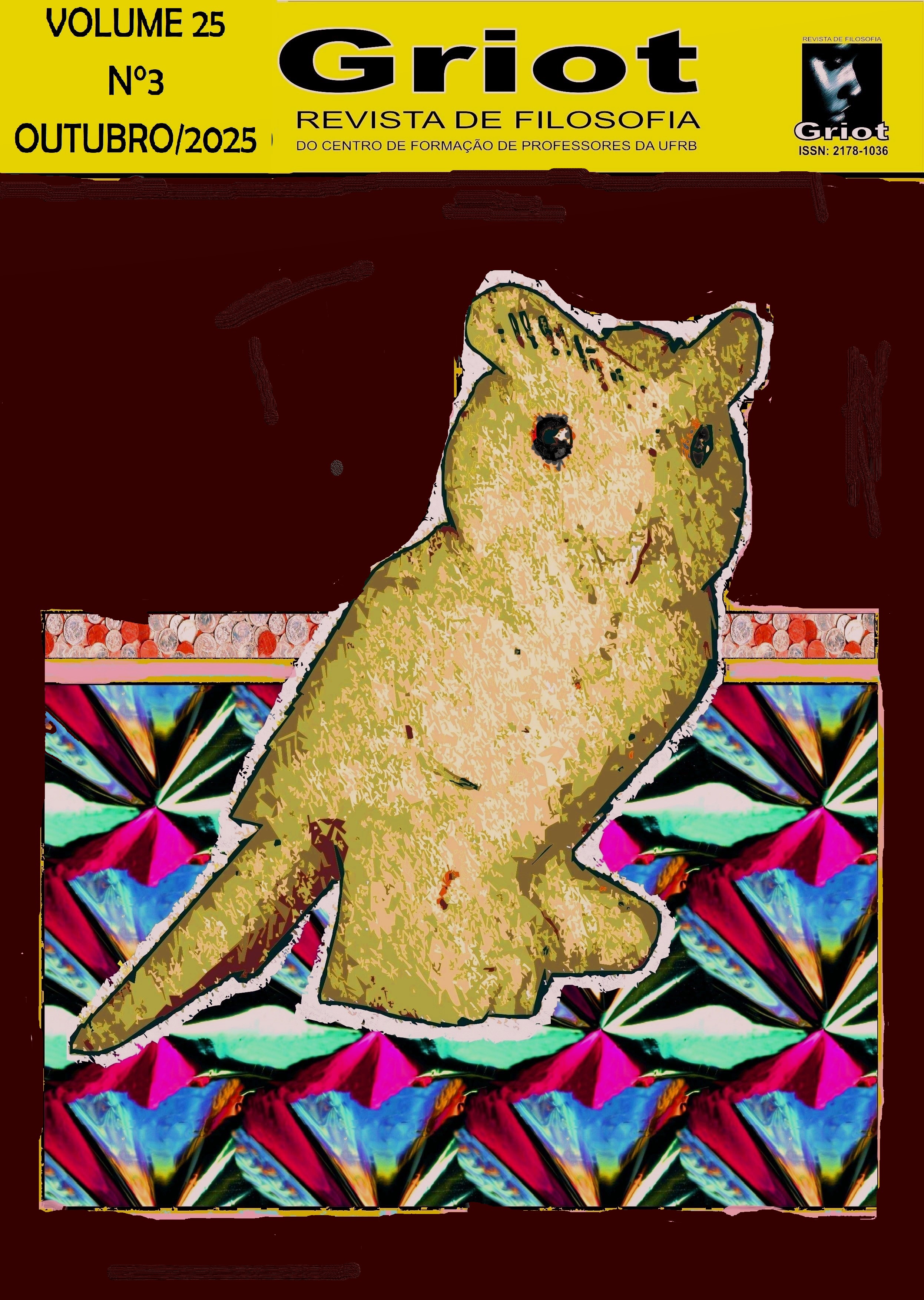Gadamer and Benjamin on the limits of the unspeakable: an originary world-understanding?
DOI:
https://doi.org/10.31977/grirfi.v25i3.5366Keywords:
Language; Hermeneutics; Gadamer; Benjamin; Modernity.Abstract
This paper investigates the transformations of language in modernity based on the philosophies of Hans-Georg Gadamer (1900-2002) and Walter Benjamin (1892-1940), exploring how hermeneutics and allegory respond to the rise of the image as a communicative paradigm. While Gadamer understands language as the ontological medium of understanding – a dialogical process rooted in historicity - Benjamin sees it as a field of tension between original nomination and instrumentalized ruin, especially in the era of technical reproducibility. The study confronts their perspectives on the limits of language: if Gadamer emphasizes the fusion of horizons in tradition, Benjamin seeks to rescue, in the cracks of history, traces of a mimetic and auratic experience. The aim is to analyse how both think about the relationship between understanding and ineffability, articulating concepts such as expressionless (Kant/Benjamin) and hermeneutic play (Gadamer) to discuss fundamental antinomies: language and non-language, universal and particular, continuity and rupture. At the end, it is proposed that the tension between these thinkers is not mere opposition, but a productive dialog about the crisis of communication in the contemporary world, in which the image often supplants the word without exhausting its mystery.
Downloads
References
ADORNO; HORKHEIMER, Max. Dialética do esclarecimento – fragmentos filosóficos. Tradução Guido Antônio de Almeida. Rio de Janeiro: Jorge Zahar, 1985.
BENJAMIN, W. Escritos sobre mito e linguagem (1915-1921). Organização, apresentação e notas de Jeanne Marie Gagnebin. 2ª ed. São Paulo: Duas Cidades; Editora 34, 2013.
BENJAMIN, W. Imagens de pensamento/Sobre o haxixe e outras drogas. Ed. e trad. de João Barrento. 1ª ed. Belo Horizonte: Autêntica, 2017.
BENJAMIN, W. Linguagem, Tradução, Literatura [Filosofia, teoria e crítica]. Tradução João Barrento. Belo Horizonte: Autêntica, 2020.
BENJAMIN, W. Magia e técnica, arte e política: ensaios sobre literatura e história da cultura. Trad. Sérgio Paulo Rouanet. 8ª ed. São Paulo: Brasiliense, 2012.
BENJAMIN, W. Origem do drama trágico alemão. Edição e tradução João Barrento. 2ª ed. Belo Horizonte: Autêntica, 2020.
BENJAMIN, W. Passagens. Edição alemã de Rolf Tiedemann; organização da edição brasileira Willi Bolle; colaboração na organização da edição brasileira Olgária Chain Féres Matos. 1ª reimpressão. Belo Horizonte: Editora UFMG; São Paulo: Imprensa Oficial do Estado de São Paulo, (1982) 2018.
BENJAMIN, W. The correspondance of Walter Benjamin – 1910-1940. Edição e notas de Gershom Scholem e Theodor Adorno. Tradução de Manfred R. Jacobson e Evelyn M. Jacobson. Chicago/Londres: The University of Chicago Press, (1978) 1994.
BRAIDA, Celso Reni. Filosofia da Linguagem. Florianópolis: EAD-UFSC, 2009, v.1.
DERRIDA, Jacques. Força de lei – fundamento místico de autoridade. Trad. Leyla Perrone-Moisés. 2ª ed. São Paulo: Martins Fontes, 2010.
DERRIDA, Jacques. “Spectographies”. In Ecographies on television: filmed interviews – Jacques Derrida and Bernard Stiegler. Cambridge/Oxford: Polity Press; Blackwell Publishers, 2002, pp. 113-135.
FREGE, Gottlob. Lógica e Filosofia da Linguagem. Org. e trad. Paulo Alcoforado. São Paulo: Edusp, 2009.
GADAMER, Hans-Georg. Verdade e método I: traços fundamentais de uma hermenêutica filosófica. 3ª ed. Vozes, Petrópolis, 1999.
HEIDEGGER, M. Ensaios e conferências. Petrópolis: Vozes, 2001.
HEIDEGGER, M. “O caminho para a linguagem”. Trad. M. Schuback. In: A caminho da linguagem. Petrópolis: Vozes, 2003. (Coleção Pensamento Humano).
MENNINGHAUS, Winfried. Saber de los umbrales: Walter Benjamin y el pasaje del mito. 1ª ed. Buenos Aires: Biblos, (1986) 2013.
MENNINGHAUS, Winfried. Walter Benjamins Theorie der Sparchmagie. Frankfurt am Main: Suhrkamp, (1980) 1995.
MENNINGHAUS, Winfried. “Walter Benjamin’s Variations of Imagelessness”. In Critical Horizons: A Journal of Philosophy and Social Theory, 14(3), 2013, pp. 407–428. Acesso: 1 mai 2025. Doi: 10.1179/1440991713z.00000000016.
MICHAUD, Philippe-Alain. Aby Warburg and the image in motion. Translated by Sophie Hawkes. Foreword by Georges Didi-Huberman. Cambridge/Londres: The MIT Press, 1998.
PENCO, Carlo. Introdução à Filosofia da Linguagem. Trad. E. F. Alves. Petrópolis: Vozes, 2006.
Downloads
Published
How to Cite
Issue
Section
License
Copyright (c) 2025 Rafael Batista Dias

This work is licensed under a Creative Commons Attribution 4.0 International License.
The authors who publish in Griot: Revista de Filosofia maintain the copyright and grant the magazine the right of first publication, with the work simultaneously licensed under the Creative Commons Attribution 4.0 International License, allowing sharing and adaptation, even for commercial purposes, with due recognition of authorship and initial publication in this journal. Read more...









































































